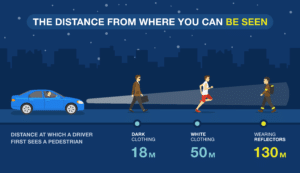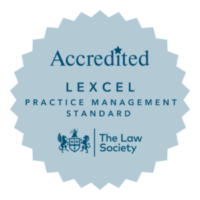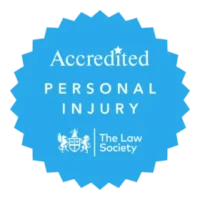Seeing in the dark: A personal injury lawyer’s guide to winter accident prevention
02nd Nov 2022
As the days grow shorter and we head into winter, pedestrians, cyclists and motorist are all likely trying to get used to getting about in dusk and dark conditions once again.
Road traffic accidents are common at this time of year between pedestrians and motor vehicles due to lack of visibility and, at times, common sense.
Everyone can do their bit to be safe and seen during the darker winter months and prevent needless injury occurring.
We can’t see in the dark, which means drivers can’t see you – so help everyone around you by being as visible as possible.
If you are a pedestrian, carry a good quality torch with you and make sure it has battery or charge.
Many of the accidents that occur for pedestrians are those where they have tripped and fallen over a defective section of pavement or misjudged where they were stepping and rolled their ankle on uneven or slippery ground and fallen.
A quality bright torch will illuminate areas of poor visibility and reduce the risk of a public liability accident. It will also alert motorists, other pavement users and other road users to your presence and make you much more visible when crossing.
Have you considered high-visibility and reflective clothing?
High-visibility clothing and accessories are great for low light conditions, reflective clothing is even better for the night.
There are a range of jackets, harnesses, hats, arm bands, etc that pedestrians, cyclists, runners and horse riders can buy. These are well worth it as they will make you much more visible to motorists, other road and pavement users.
There are even harnesses that are reflective and have rechargeable lights on the front and back, giving much more peace of mind that you will likely be seen and safe when out at night.

Motorists need to play their part too
Now is a very good time to check that all of the lights on your vehicle are operational. That includes rear lights and brake lights as defective and non-operational lights on vehicles are dangerous and may cause a road traffic accident.
It is good practice to perform a visual inspection of your car frequently to ensure that all lights are operational. You can check brake lights by reversing up to a wall and looking into your rear view mirror and pressing down on the brake.
Remember also to check your tyres for tread depth and wear and tear. Bad tyres are frequently the cause of loss of control in poor weather conditions and can cause a fatal accident on high speed routes and motorways.
If you are uncertain, it is fairly common that mechanics and garages will offer free winter checks for vehicles in most areas.
It’s not just about vehicle maintenance either
It is a good idea for motorists to bear in mind that many pedestrians will likely be wearing dark coloured, non-reflective clothing.
Pedestrians are also at the top of the hierarchy of road users, meaning that if you hit a pedestrian with your car, regardless of what they are wearing, you could be sued for injury caused to them and even prosecuted for driving dangerously or without due care and attention.
The following are driving good behaviours to keep in mind:-
- Slow down on approach to areas where pedestrians are likely to cross (i.e. Junctions, Zebra crossings, Pelican crossings, traffic lights and in town and city centres where there is high pedestrian footfall) so that you have plenty of time and space to come to a stop of someone does cross in front of you.
- Make sure your lights are on when the sun starts to set so that you are and continue to remain visible. If in doubt, keep your lights on any time you are driving.
- Be aware of your surroundings. This means staying off your phone and keeping your eyes on the road and surroundings so that any potential hazards can be perceived and avoided before they become a full-blown accident.
And one for the cyclists
High visibility and reflective clothing is essential to the safety of anyone cycling for pleasure or as part of their commute. Wearing dark clothing in overcast/heavy downpours/poor visibility weather or in the dark makes it extremely likely that an accident will occur.
Lights on the front and rear of any bicycle is also a necessity when out and about, whether it’s someone casually cycling to a friend’s house (be that a child, teenager or adult), a hobby cyclist trying to beat their personal best or someone cycling to and from work or school.
Simply having the above, and making sure that they are functional and visible could mean the difference between a pleasant trip and a cycling accident either with a motor vehicle or a pedestrian.
Visibility is key to avoiding winter accidents and injury. If everyone using roads and pavements during the darker winter months made visibility their top priority, there would likely be a measurable decrease in injuries caused needlessly through negligence.
How to get in touch to find out more
Lauren Martin is an experienced client focussed Personal Injury FCILEx Lawyer at Thatcher + Hallam LLP. To discuss an accident and a potential claim for injuries suffered please call 01761 414646 or email enquiries@th-law.co.uk.
Related news
Articles you may find useful
Like this article? Sign up for our regular newsletters






